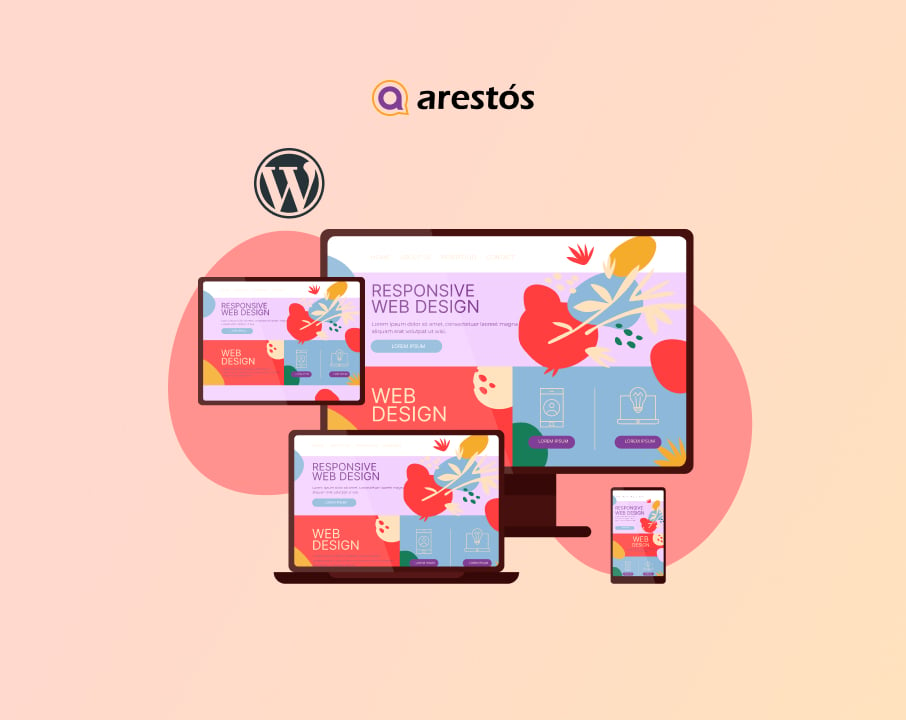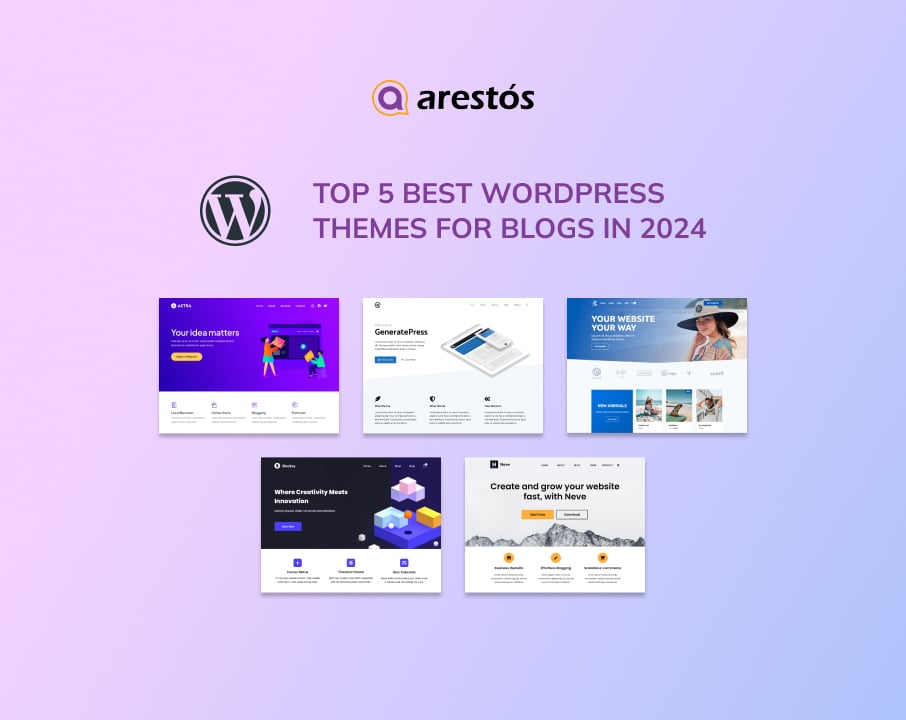Boost Your Website’s SEO with a WordPress Host that Offers Fast Loading Speeds
In today's digital landscape, search engines like Google prioritize user experience as a key factor in determining search rankings. One crucial aspect of user experience is website loading speed. Furthermore, the choice of a WordPress host plays a crucial role in determining the loading speed and overall performance of your website. A reliable and optimized hosting provider can significantly enhance your website's speed, contributing to improved SEO rankings.
In today’s digital landscape, search engines like Google prioritize user experience as a key factor in determining search rankings. One crucial aspect of user experience is website loading speed. Furthermore, the choice of a WordPress host plays a crucial role in determining the loading speed and overall performance of your website. A reliable and optimized hosting provider can significantly enhance your website’s speed, contributing to improved SEO rankings.
Choosing the right WordPress host is crucial for optimizing website loading speed, which in turn positively impacts your SEO efforts. By prioritizing a hosting provider that understands the significance of performance, you can create a solid foundation for achieving better search engine rankings and delivering a superior user experience.
Understanding the Impact of Loading Speed on SEO
Google’s Emphasis on User Experience and Page Speed
Google, as the leading search engine, places a strong emphasis on user experience and considers page speed as a crucial aspect of it. In recent years, Google has explicitly stated that website loading speed is a ranking factor in its algorithm. The search engine aims to provide its users with the most relevant and satisfying search results, and a fast-loading website contributes significantly to a positive user experience.
Google’s focus on page speed is evident through initiatives like the “Core Web Vitals” update. This update introduced new metrics, including Largest Contentful Paint (LCP), First Input Delay (FID), and Cumulative Layout Shift (CLS), which measure loading speed and overall user experience. Websites that perform well in these metrics have a better chance of ranking higher in search results.
How Loading Speed Affects Bounce Rates and User Engagement
Loading speed has a direct impact on bounce rates and user engagement. When a website takes too long to load, visitors are more likely to become frustrated and abandon it, resulting in a high bounce rate. Bounce rate refers to the percentage of users who leave a website after viewing only one page. High bounce rates indicate to search engines that users are not finding what they need or are having a poor experience, potentially leading to lower search rankings.
On the other hand, fast-loading websites tend to have lower bounce rates and higher user engagement. When a website loads quickly, users are more inclined to stay, explore its content, and interact with various elements. This increased engagement signals to search engines that the website is valuable and relevant, potentially resulting in improved rankings.
WordPress Host: Relationship Between Loading Speed and Search Engine Rankings
Loading speed directly influences search engine rankings. Google and other search engines prioritize fast-loading websites because they align with their goal of providing the best user experience. Websites that offer quick and seamless experiences tend to rank higher in search results compared to slower-loading competitors.
In addition, loading speed indirectly affects other SEO factors. When users have a positive experience on a fast website, they are more likely to stay longer, visit multiple pages, and complete desired actions such as making a purchase or subscribing to a newsletter. These user signals contribute to search engines perceiving the website as high-quality and relevant, potentially leading to improved rankings.
Furthermore, loading speed is considered a mobile ranking factor as well. With the increasing dominance of mobile search, search engines prioritize fast-loading websites that offer a smooth experience on mobile devices. Websites that fail to meet mobile loading speed expectations may experience lower mobile search rankings.
In summary, loading speed has a significant impact on SEO. It aligns with Google’s focus on user experience, affects bounce rates and user engagement, and plays a role in search engine rankings. Prioritizing a fast-loading website is essential for improving SEO performance and providing visitors with a positive experience that encourages engagement and conversions.
Factors Affecting Website Loading Speed When Using a WordPress Host
Server Infrastructure and Hardware
The server infrastructure and hardware provided by your WordPress host have a significant impact on your website’s loading speed. Factors such as server capacity, processing power, and network connectivity influence how quickly your website’s files can be accessed and delivered to visitors’ browsers. Opting for a hosting provider that offers robust and reliable servers with ample resources can help ensure faster loading times.
WordPress Host: Content Optimization and File Compression
Efficient content optimization and file compression techniques contribute to improved loading speed. Optimizing images, videos, and other media files reduces their file sizes without sacrificing quality. This reduces the amount of data that needs to be transmitted when a user visits your website, resulting in faster loading times. Plugins or tools that automate the optimization process can be employed to streamline this task.
Additionally, optimizing HTML, CSS, and JavaScript files by minimizing whitespace, removing unnecessary code, and utilizing compression techniques such as GZIP can further enhance loading speed. Smaller file sizes mean quicker downloads, leading to faster rendering of web pages.
Caching and Content Delivery Networks (CDNs)
Implementing caching mechanisms and leveraging content delivery networks (CDNs) can significantly improve loading speed. Caching involves temporarily storing static versions of web pages and assets, reducing the need for the server to generate the page dynamically with each request. Caching can be implemented at the server level or through WordPress caching plugins.
CDNs distribute your website’s content across multiple servers located in different geographic regions. When a user accesses your website, the CDN delivers the content from the server closest to their location, minimizing latency and improving loading speed. CDNs also help reduce the load on your origin server, resulting in faster response times.
WordPress Themes and Plugins
The choice of WordPress themes and plugins can impact loading speed. Opting for lightweight and well-coded themes is recommended as they have fewer unnecessary features and cleaner code, leading to faster page rendering. Themes that are optimized for speed often prioritize performance and adhere to best practices.
Similarly, plugins should be chosen carefully, as poorly optimized or resource-intensive plugins can slow down your website. Regularly assess and remove any unnecessary plugins that are not actively contributing to your site’s functionality. Consider using performance optimization plugins that help with caching, minification, and other speed-enhancing techniques.
In conclusion, various factors influence website loading speed. Ensuring a reliable server infrastructure, optimizing content and files, implementing caching mechanisms and CDNs, and selecting efficient WordPress themes and plugins are crucial steps to enhance loading speed. By addressing these factors, you can significantly improve your website’s performance and provide visitors with a fast and responsive browsing experience.
Choosing a WordPress Host with Fast Loading Speeds
Evaluating Hosting Providers’ Infrastructure and Technology
When selecting a WordPress host, it is essential to evaluate their infrastructure and technology to ensure fast loading speeds. Consider factors such as server architecture, hardware specifications, and the use of technologies like SSD (Solid State Drive) storage, which offer faster data retrieval times compared to traditional HDD (Hard Disk Drive) storage. Hosting providers that invest in modern and robust infrastructure are more likely to deliver faster loading speeds for your website.
Performance benchmarks and uptime guarantees when Choosing a WordPress Host
Look for hosting providers that provide performance benchmarks and uptime guarantees. Performance benchmarks demonstrate the hosting provider’s commitment to speed and reliability. Uptime guarantees ensure that your website will be accessible to visitors without significant interruptions. Choose a host with a high uptime guarantee, ideally 99.9% or higher, to minimize any potential downtime that can negatively impact loading speed.
Understanding the Importance of Server Locations and Proximity
The physical location of servers plays a crucial role in loading speed. Opt for a hosting provider with server locations strategically positioned to be closer to your target audience. When visitors access your website, the shorter the distance data has to travel between the server and their devices, the faster the loading speed. Hosting providers with a global network of data centers can help ensure optimal server proximity for users worldwide.
Reviews and Recommendations from Other Website Owners
Consider reading reviews and seeking recommendations from other website owners to assess the loading speeds offered by different hosting providers. Look for feedback regarding loading speed, uptime, customer support, and overall satisfaction. Pay attention to reviews from websites with similar requirements to yours, as their experiences can provide valuable insights into the performance of different hosting providers.
Additionally, consider joining online communities or forums where website owners discuss their hosting experiences. Engaging in conversations and asking for recommendations can help you gather first-hand experiences and opinions from those who have tested the loading speeds of various hosting providers.
By carefully evaluating hosting providers based on their infrastructure, performance benchmarks, uptime guarantees, server locations, and recommendations from other website owners, you can make an informed decision when choosing a WordPress host that prioritizes fast loading speeds.
Optimizing WordPress for Speed
Selecting Lightweight Themes and Well-Coded Plugins
Choosing lightweight themes and well-coded plugins is crucial for optimizing WordPress for speed. Look for themes that prioritize performance and have minimal design elements and features that can slow down your website. Well-coded plugins follow best practices and are optimized for speed. Avoid using resource-intensive plugins that can significantly impact loading times. Regularly review and remove any unnecessary themes and plugins that are not actively contributing to your website’s functionality.
Implementing Caching Mechanisms and Browser Caching
Implementing caching mechanisms is an effective way to improve loading speed. WordPress caching plugins can generate static versions of your web pages, reducing the need for dynamic generation with each visitor request. This significantly improves response times and overall performance. Additionally, enable browser caching by setting appropriate expiration headers for static resources. Browser caching allows returning visitors to load your website faster by storing certain files on their devices, reducing the number of requests made to the server.
Minifying CSS and JavaScript Files Using a WordPress Host
Minifying CSS and JavaScript files involves removing unnecessary characters, such as whitespace and comments, to reduce their file sizes. This optimization technique helps to improve loading speed by reducing the amount of data that needs to be downloaded by visitors’ browsers. WordPress caching plugins often include options for automatic minification. Alternatively, you can use dedicated minification plugins or manually minify your CSS and JavaScript files.
Optimizing Images for Web and Using Lazy Loading Techniques
Images can significantly impact loading speed if not properly optimized. Compress your images without compromising quality to reduce file sizes. WordPress plugins or online tools can help with image optimization. Additionally, consider using responsive images to deliver appropriately sized images based on the user’s device and screen size. This further reduces the data transferred and improves loading speed.
Implement lazy loading techniques to defer the loading of images until they are about to become visible on the screen. This approach prioritizes the loading of content above the fold, improving the initial loading speed. Lazy loading plugins or JavaScript libraries can automate this process for your WordPress website.
By selecting lightweight themes and well-coded plugins, implementing caching mechanisms and browser caching, minifying CSS and JavaScript files, and optimizing images for the web while using lazy loading techniques, you can significantly enhance the loading speed of your WordPress website. These optimization strategies help reduce file sizes, minimize server requests, and prioritize the loading of critical content, resulting in a faster and more responsive user experience.
Testing and Monitoring Website Loading Speed with a WordPress Host
Tools for Measuring Loading Speed and Performance
To effectively test and monitor your website’s loading speed, utilize various tools specifically designed for this purpose. Some popular tools include:
- Google PageSpeed Insights: This tool analyzes your website’s performance and provides suggestions for improvement. It measures both mobile and desktop loading speeds, as well as other performance metrics.
- GTmetrix: GTmetrix offers detailed reports on your website’s loading speed, including information on page size, requests, and various optimization recommendations. It provides insights from different locations and browser types.
- Pingdom Website Speed Test: With Pingdom, you can test your website’s loading speed from multiple locations worldwide. It provides a waterfall analysis of your website’s assets and offers suggestions for optimization.
- WebPageTest: This tool allows you to test your website’s loading speed from different locations, browsers, and connection speeds. It provides a comprehensive breakdown of various performance metrics and offers detailed reports.
Regular Performance Audits and Monitoring
Performing regular performance audits and monitoring is crucial to ensure that your website maintains optimal loading speed. Set up a schedule to conduct periodic audits using the aforementioned tools. Assess your website’s performance metrics, including loading speed, page size, and requests.
Monitor your website’s loading speed continuously using monitoring services or plugins that alert you to any significant drops in performance. This allows you to identify and address issues promptly, ensuring that your website consistently delivers fast loading times.
Addressing Issues and Optimizing for Better Speed with a WordPress Host
When issues are identified during testing or monitoring, it is important to address them promptly to optimize your website’s loading speed. Some steps to consider include:
- Resolve any identified performance bottlenecks, such as large file sizes, excessive server requests, or slow database queries. Optimize code, eliminate unnecessary elements, and streamline your website’s structure to improve loading speed.
- Implement recommended optimizations, such as enabling browser caching, leveraging content delivery networks (CDNs), or utilizing caching plugins. These strategies can significantly enhance loading speed.
- Regularly update your themes, plugins, and WordPress core to ensure you are benefiting from the latest optimizations and performance enhancements.
- Optimize your server configuration by adjusting settings, such as memory limits, execution time, and server-level caching options. Consult with your hosting provider or a knowledgeable professional to make informed decisions.
- Continuously monitor and test your website’s loading speed to evaluate the impact of implemented optimizations and identify any further areas for improvement.
By regularly testing and monitoring your website’s loading speed, addressing identified issues promptly, and implementing optimizations, you can ensure that your website maintains optimal performance. This ongoing commitment to speed optimization will enhance the user experience, improve search engine rankings, and increase visitor engagement.
Conclusion
In conclusion, loading speed plays a critical role in the success of your website’s SEO efforts. Google and other search engines prioritize user experience, and fast-loading websites contribute to a positive user experience. By following these recommendations, you can optimize your website’s loading speed, improve user experience, and boost your SEO performance.
At Arestós, we understand the importance of fast loading speeds for your WordPress website. Our hosting services are specifically designed to deliver optimal performance, ensuring that your website loads quickly and provides an excellent user experience. With our reliable infrastructure and cutting-edge technologies, you can trust Arestós to provide the speed and performance your website needs to succeed in the competitive online landscape.



